Environmental Engineering Reference
In-Depth Information
• assess the cumulative radiation exposure to inspection personnel
of the plant;
• perform a sensitivity analysis of damage from the basic parameters,
such as the intensity of the vibrations, the barriers of the system, etc.
• recommend improvements and further research that may increase
operational safety of the Ignalinsk nuclear power plant, 2 blocks.
Risk assessment involves the following steps:
• analysis of the mechanisms of failure and degradation;
• assessing the consequences of failures
C
;
• evaluation of failure probability
P
;
• definition of the measure of risk
R = PC
;
• perform risk ranking for each section of the pipeline;
• define a new selection of inspection sites (ISI-programme), with the
components with the highest risk;
• rate Δ
R
(new case of risk - old case of risk);
• assess the cost and radiation dose exposure to the new ISI-
programme in comparison with on the existing ISI-programme;
• make appropriate recommendations based on research into risk in
order to improve operation and maintenance.
The consequences of failure were assessed using the PSA. At the same
time, the following were taken into account:
• extent of LOCA;
• location of LOCA.
In assessing the probability of failure, the availability to inspected areas
was also taken into account (Fig. 7.11).
Effectiveness of inspection was assessed by the detection of defects
(Fig. 7.12) using the equation of the probability of detection for different
inspection efficiency:
P
d.d
(
s
)=Ф[
c
1
+
c
2
ln(
s
)],
c
1
∈
R
,
c
2
≥ 0,
[7.1]
7. 11
Number of welds with different access: 1) good availability
(automatic and manual inspection); 2) normal availability (manual
inspection only); 3 - bad availability (manual inspection with
difficulties).

Search WWH ::

Custom Search